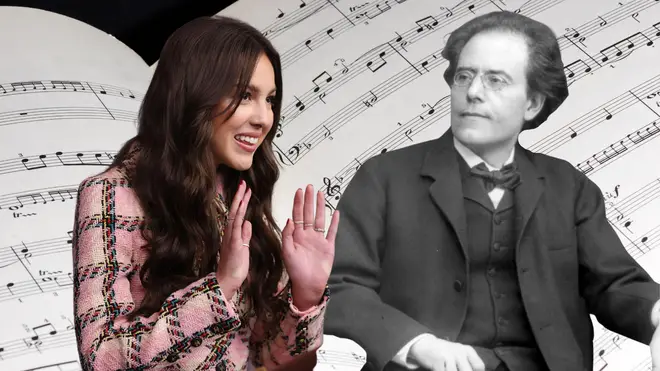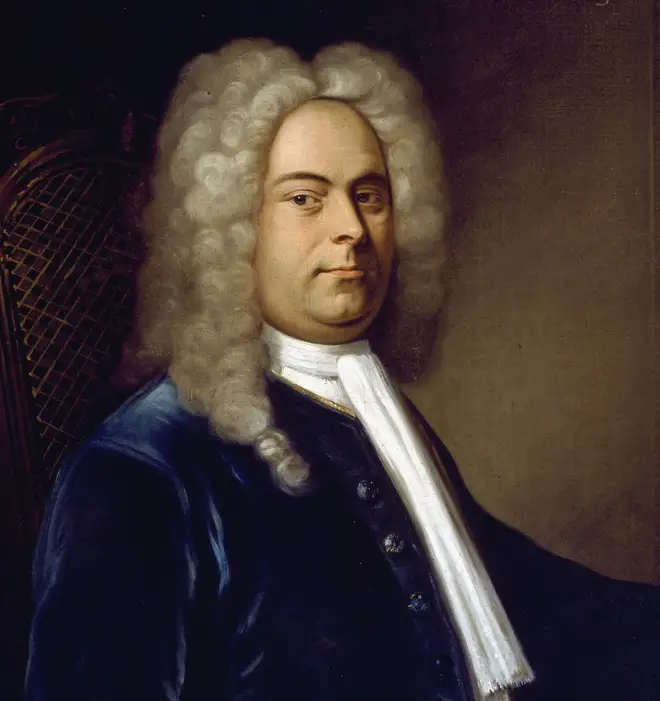On Air Now
Classic FM Breakfast with Aled Jones 6:30am - 9am
8 October 2021, 09:39

‘Nothing in music is ever new’ says pop artist, Olivia Rodrigo, who has spent the last few months defending her debut album Sour amid a music crediting crisis. But where have we heard this before, and could the answer to the music rights debate involve looking back in time...
In an interview with Teen Vogue, pop star Olivia Rodrigo said “nothing in music is ever new” in response to criticism levelled over the originality of her debut album, Sour.
She might be surprised to find out that actually many of the greatest composers of the last few centuries would actually agree with her.
The 18-year-old has spent the last few months since the album’s release in May 2021, defending her songs in the midst of music rights issues.
The issue? The artist has reportedly given millions in royalties to other artists such as Taylor Swift, and Hayley Williams, after being accused of copying their songs.
Read more: Are Led Zeppelin guilty of plagiarism? A music theory analysis

Olivia Rodrigo teases new music in Sour album trailer
There is a long history in classical music of composers copying each other’s works.
Some sources claim that in earlier centuries, it was even seen as a compliment to have another composer quote your work in theirs.
However, the same can’t be said for today’s industry, where complex music rights make the copying of others’ work a financial – rather than flattery – issue.
Rodrigo has consequently had to retroactively give other artists, who weren’t involved in the production of her music, credits on the album because of supposed similarities.
Read more: Is Taylor Swift actually a good singer?
Classical music, like rap music today, has long relied on sampling, the practice of using fragments of others’ musical work.
While rap music uses sections from recordings to create new songs, classical music uses motifs to build and develop on.
Composers have done this both subconsciously and on purpose for centuries. It’s no wonder so many musicians today are caught up in music rights issues, as it can be so easy to hear a tune somewhere, and not realise that it’s inspiring a new song you’re writing.
Read More: 17 pop songs you didn’t know were directly inspired by classical music
Handel was famous for borrowing from his own work, as well as other composers’, due to the time constraints he often found himself under. As a composer with over more than 120 cantatas, trios and duets, is it any surprise?
A famous example of this is the trio from the overture of Handel’s opera Theodora and its similarities to an earlier trio from Gottlieb Muffat’s harpsichord work Componimenti Musicali per il Cembalo, a now obscure 15th-century composer.
Other examples include Mozart’s Symphony No. 37, which is actually Michael Haydn’s (Joseph Haydn’s younger brother) Michael Haydn’s Symphony No. 25 with the addition of a slow introduction.
The Italian composer Luciano Berio took both the name, In ruhig fleissender bewegung, and some auditory similarities for the third movement of his Sinfonia from the third movement of Gustav Mahler’s Symphony No. 2.

The concept of copyright isn’t a modern invention. Recordings of author autonomy have been reported as early as the Greek and Roman eras.
However, in Britain, The Copyright Law for Music Act 1906 was added to copyright law by the British government in 1906. This bill was introduced due to the fact that many of the popular songwriters of the time were dying in poverty due to a piracy crisis created by gangs at the start of the 20th century.
These gangs would make money by buying sheet music, copying it out, and then reselling these copies at half the price.
Almost 50 years later, the 1961 Rome Convention for the Protection of Performers, Producers of Phonograms and Broadcasting Organisations was introduced. It was later adopted into the Geneva Convention, and acted as prevention of recorded music piracy.
But has music copyright gone too far? A pattern has been building in the music industry of handing out songwriting credits so as to protect artists from legal action where songs are too similar.
An example of a high profile case which went to court involves two songs; ‘Blurred Lines’ by Robin Thicke, TI, and Pharrell Williams and ‘Got To Give It Up’ by Marvin Gaye.
In 2015 a jury in the United States ruled that the writers of ‘Blurred Lines’ copied the Marvin Gaye track. This landmark case can be seen as the starting point for when artists started becoming extra cautious when making sure to credit their musical inspirations.
Read More: Robin Thicke’s Blurred Lines prompts unexpected classical hit
In regards to the issue of 18-year-old Rodrigo’s musical inspiration, whether subconscious or not, she has probably taken the correct decision in order to watch her back, career wise.
One thing is certain though. The issue of musical copyright has made the once flattering idea of music copying and turned it into a money grabbing exercise.
While Mahler may agree with Rodrigo’s “Nothing in music is ever new” statement, he’d have to agree, that composers today have many more rings to jump through than the classical composers of the past.